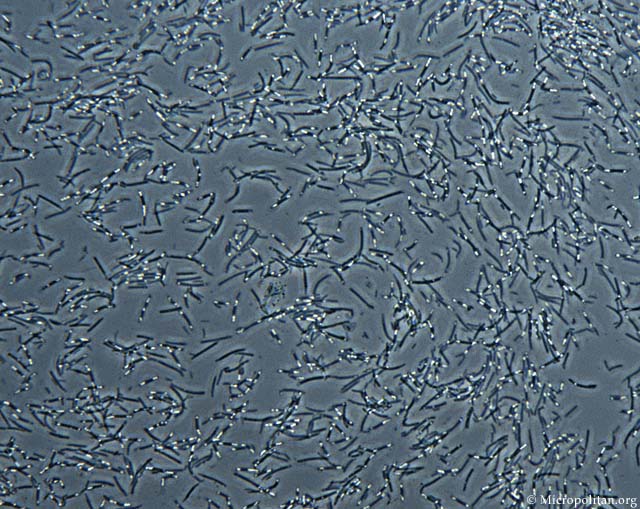
This means that they are single-celled organisms without a nucleus membrane (nuclear envelope). ☰ The grid therefore consists of 10 vertical stripes 0.25 mm wide and 10 horizontal strips 0.20 mm wide forming thus 100 rectangles, we will only count the cells in 10 of the 25 non-contiguous rectangles taken at random in the cell. While prior studies have relied on techniques involving spectral labeling, we have developed an expansion microscopy method (ExM) in which bacterial cells. Bacteria Under the Microscope Types, Morphology and Reproduction Like archeans, bacteria are prokaryotic cells.

Do not count any element that overlaps the rows on the right and bottom. Bacteria have characteristic shapes (cocci, rods, spirals, etc.) and often occur in characteristic aggregates (pairs, chains, tetrads, clusters, etc.). Based on planes of division, the coccus shape can appear in several distinct arrangements: diplococcus, streptococcus. ☰ For items that overlap lines, count all that overlap lines on the left and top. Summary There are three basic shapes of bacteria: coccus, bacillus, and spiral. Coccus A coccus-shaped bacterium is usually spherical, although some appear oval, elongated, or flattened on one side. The cocci come in 5 different arrangements the bacilli in 3 different arrangements and the spirals in 3 different forms. Bacillus is represented by Bacillus megaterium, coccus by Micrococcus luteum. - Switch to the x40 objective to perform the count There are three common shapes of bacteria: coccus bacillus spiral. Shows characteristic size and form of bacillus, coccus, and spirillum bacteria.load a new hemocytometer from the re-homogenized suspension


Consisting of 100 rectangles of equal surfaces.Some species have one tonumerous projections called flagella which enable the bacteria to swim and move. Dimensions: L: 2.5 mm, W: 2 mm, H (or depth): 0.20 mm. The most ordinary shapes of bacteria include rod, cocci (round), and spiral forms.Cellular arrangements occur singularly, in series, and in groups.


 0 kommentar(er)
0 kommentar(er)
